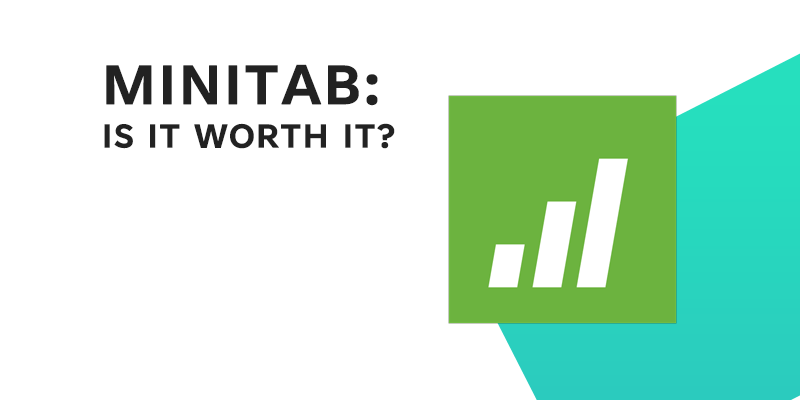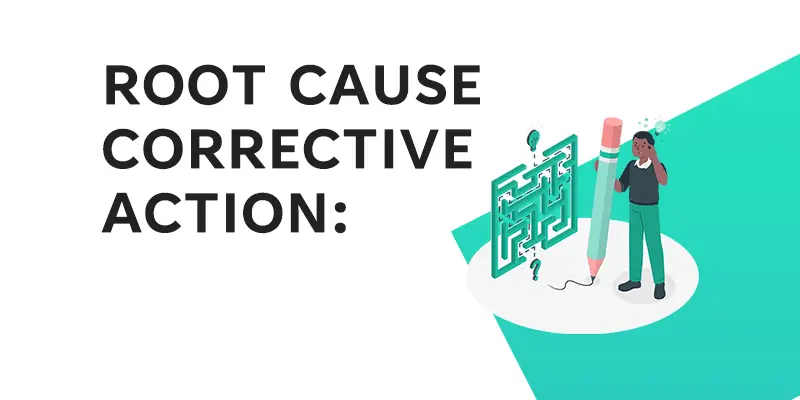In the world of Lean Six Sigma and statistical analysis, Minitab has long been a go-to software for professionals seeking data-driven solutions. But as the landscape of analytics tools expands, many are questioning whether Minitab’s prestige comes with a price tag that’s just too high. Is this specialized software truly indispensable, or are there more cost-effective alternatives that can deliver the same, if not better, results?
This blog post aims to dissect this question by delving into the features, costs, and limitations of Minitab. We’ll also explore how emerging platforms like LearnLeanSigma.com offer advanced statistical tools and in-depth analysis for free. So, if you’re contemplating whether to invest in Minitab or are just curious about other potent options out there, stick around. You might just find that Minitab isn’t the only game in town.
What is Minitab?
A Brief History of Minitab
Minitab began its journey in 1972, founded by researchers and statisticians from Penn State University. Initially designed as a tool to help students understand statistics, it quickly gained traction within academic circles before breaking into the industry. Over nearly five decades, Minitab has evolved to become a leading software application for statistical analysis. It is especially popular in the world of Six Sigma, where data-driven methodologies are paramount for business process improvement.
Key Features and Functionalities
1. Descriptive Statistics
Minitab provides a comprehensive suite of tools for summarizing data. You can quickly generate means, medians, standard deviations, and other key metrics that give you a snapshot of your dataset.
Hypothesis Testing
One of the core functionalities in Minitab is its robust hypothesis testing features. Whether you’re looking to perform a t-test, ANOVA, or chi-square tests, Minitab has you covered.
Regression Analysis
Minitab excels in both simple and multiple regression analysis, allowing you to model relationships between variables effectively. This is crucial for predictive analytics and understanding how different factors impact your outcomes.
Control Charts
A cornerstone in the Six Sigma methodology, control charts in Minitab help you monitor processes over time and identify any variations that may require corrective action.
Quality Tools
Minitab offers a range of quality tools like Pareto charts, fishbone diagrams, and FMEA, which are essential in the Lean Six Sigma methodology for process improvement.
User-Friendly Interface
One of Minitab’s strongest selling points is its user-friendly interface. The software offers a straightforward, menu-driven approach that even those with limited statistical knowledge can navigate.
Data Visualization
With Minitab, you can easily create a variety of charts and graphs to visualize your data, making it easier to interpret and share your findings.
Project Management Features
While not its primary function, Minitab does offer some basic project management tools to help you keep track of tasks and timelines, especially useful in Six Sigma projects.
Costs Associated with Minitab
While Minitab’s features and functionalities might seem appealing, it’s crucial to weigh them against the financial investment required to effectively utilize the software. Below, we break down the costs you can expect to incur.
Licensing Costs
Minitab is far from a one-time expense. A single-user license can set you back around $1,595, and this is just for the basic statistical package. If you’re interested in their Quality Trainer or other advanced modules, you’re looking at additional costs. For organizations, the costs can be exponentially higher, especially if multiple team members require access to the software. Some companies even opt for site licenses, which come with their own hefty price tag, often exceeding tens of thousands of dollars annually.
Training Costs for Team Members
Minitab’s user interface, while designed to be user-friendly, still requires a level of expertise that most people do not possess out of the box. Training is almost a necessity, and that doesn’t come cheap. Official Minitab training courses can range from $450 to $1,600 per person depending on the complexity and duration of the course. Multiply this by the number of team members you have, and you’re looking at a substantial investment.
Alternatives to Minitab
While it has its merits, its high costs and specialized nature make it worth exploring other options. Fortunately, there are various alternatives, both free and paid, that can accomplish similar statistical and analytical tasks.
Introduction to Various Free and Paid Alternatives
The landscape of statistical analysis tools is vast and ever-evolving. From open-source programming languages to specialized software packages, there are plenty of alternatives that can effectively replace or even outperform Minitab in specific areas.
R
What is R?
R is a free, open-source statistical software and programming language that is highly extensible and customizable. It’s widely used in academia, research, and increasingly in industry settings.
Key Features and Functionalities
- Comprehensive Statistical Analysis: R offers a broad range of statistical tests, models, and data manipulation tools.
- Data Visualization: With libraries like ggplot2, R provides powerful data visualization capabilities.
- Community Support: Being open-source, R has a strong community, which means plenty of tutorials, forums, and free packages to extend its capabilities.
Cost Implications
- Absolutely Free: R is open-source, meaning you can download, use, and extend it without any cost.
Python Libraries (Pandas, NumPy, SciPy)
What Are These Libraries?
Python is another open-source programming language that, with the help of libraries like Pandas for data manipulation, NumPy for numerical computations, and SciPy for scientific computing, becomes a powerful tool for statistical analysis.
Key Features and Functionalities
- Versatile Data Handling: Pandas makes it easy to import, clean, and manipulate data.
- Advanced Calculations: NumPy and SciPy provide a plethora of mathematical functions for advanced calculations.
- Integration: These libraries can easily integrate with other Python libraries for machine learning, data visualization, and web development.
Cost Implications
- Open-Source and Free: Just like R, these libraries are free to use and are supported by a robust community.
Online Platforms like LearnLeanSigma.com
What is LearnLeanSigma.com?
LearnLeanSigma.com is an online platform dedicated to Lean Six Sigma methodologies. It offers various tools, calculators, guides, and templates aimed at both beginners and experts in the field.

Key Features and Functionalities
- In-Depth Analysis: The platform offers advanced statistical tools that rival those found in paid software like Minitab.
- User-Friendly: Designed with ease of use in mind, LearnLeanSigma.com offers a variety of tools that require little to no statistical background to operate.
- Cost-Efficient: Unlike Minitab, many of the resources and tools available on LearnLeanSigma.com are free to use.
Cost Implications
- Mostly Free: With the option to access high-quality guides, calculators, and statistical tools at no cost, LearnLeanSigma.com offers a budget-friendly alternative to Minitab.
The Advantages of Minitab
While Minitab comes with its share of costs and limitations, it also offers a range of features that have contributed to its longstanding reputation in the world of statistical analysis and Lean Six Sigma. Below are some of the key advantages of using Minitab.
Industry Recognition
What Does This Mean?
Industry recognition refers to the widespread acceptance and use of Minitab across various sectors, from manufacturing and healthcare to finance and research.
Why is it Important?
- Credibility: When a tool is widely recognized, it often means that it has been tested and trusted by professionals in the field.
- Compatibility: Given its industry-wide use, data and findings from Minitab are easily shared and understood across organizations.
- Standardization: Many Lean Six Sigma training programs include Minitab as part of their curriculum, making it a standardized tool in many respects.
User-Friendly Interface
What Does This Mean?
Minitab prides itself on having an interface that is intuitive and easy to navigate, even for those who may not be experts in statistical analysis.
Why is it Important?
- Reduced Learning Curve: The straightforward design helps users get up to speed quickly, saving time that might be spent on training.
- Efficiency: A user-friendly interface means that tasks can be completed more swiftly, aiding in timely project completion.
- Accessibility: The ease of use makes it more accessible to team members who may not have advanced statistical training, democratizing data analysis to some extent.
Pre-built Templates and Graphs
What Does This Mean?
Minitab comes equipped with a variety of pre-built templates and graphs for common statistical tests, quality tools, and data visualization needs.
Why is it Important?
- Convenience: These templates save users the time and effort of creating tests and graphs from scratch.
- Standardization: The pre-built options ensure that analyses are conducted in a standardized manner, which is crucial for data integrity and comparability.
- Quality: The templates are designed to meet industry standards, ensuring that the analyses and visualizations are both accurate and reliable.
The Limitations of Minitab
While Minitab has carved out a niche for itself in the world of statistical analysis, it’s not without its drawbacks. These limitations can, at times, overshadow its advantages, especially when considering the evolving landscape of data analytics tools. Here are some of the key limitations to consider.
Cost vs. Value Proposition
What Does This Mean?
The cost vs. value proposition refers to evaluating whether the benefits derived from Minitab justify its steep price tag.
Why is it a Limitation?
- Budget Constraints: For small to medium enterprises or individual consultants, the cost can be a significant burden.
- Diminishing Returns: As free or less expensive alternatives become more sophisticated, the value that Minitab offers for its price starts to wane.
Lack of Customization
What Does This Mean?
Minitab operates mostly ‘out of the box’, offering limited options for customization or scripting, unlike open-source alternatives.
Why is it a Limitation?
- Rigidity: The lack of customization can be a hindrance when you need specialized analyses that Minitab’s pre-built templates cannot handle.
- Dependence on Updates: If a specific feature or test is not available, users must wait for the next software update, unlike open-source options where one can code a solution.
The Need for Specialized Training
What Does This Mean?
While Minitab is relatively user-friendly, effectively utilizing its advanced statistical tools requires specialized training.
Why is it a Limitation?
- Additional Costs: As mentioned earlier, training can add another layer of expense to using Minitab.
- Time Investment: Learning to navigate Minitab proficiently can take time, potentially delaying project timelines.
Conclusion
In the ever-evolving landscape of statistical analysis and Lean Six Sigma methodologies, Minitab has stood as a colossus for decades. Its industry recognition, user-friendly interface, and array of pre-built templates make it a favored choice for many professionals. However, as we’ve explored, these benefits come at a considerable cost—both financial and in terms of flexibility. Licensing, training, and maintenance can drain resources, and the lack of customization can leave users wanting more. In a world where budget considerations are increasingly important, these limitations are not trivial.
This brings us to an essential question: is Minitab worth the investment? Given the advent of robust, cost-effective, and often free alternatives like R, Python libraries, and platforms like LearnLeanSigma.com, the answer leans towards ‘no’ for a growing number of scenarios. Websites like LearnLeanSigma.com not only offer advanced statistical tools but also provide in-depth analysis and resources at little to no cost. As we strive for efficiency and effectiveness in Lean Six Sigma projects, it’s crucial to choose tools that offer the best value proposition.
So, before you take out your corporate credit card for a Minitab license, explore the alternatives. You might find that the best value doesn’t always come with the highest price tag.
References
Alin, A., 2010. Minitab. Wiley interdisciplinary reviews: computational statistics, 2(6), pp.723-727.








